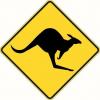I'll (unfortunately) be moving to a smaller shop space in a few months, so looking at getting a track saw to cut larger pieces and plywood panels when I bring them into the shop to save space.
My first circular saw was a worm drive SkilSaw, so it and all my other circular saws since then have had the blade on the left.
As I've been looking at my options, Makita and Festool keep getting great reviews. But they - and nearly every other track saw I've seen - have the blade on the right side. (Kreg seems to be the only one with a blade on the left, but I've seen numerous marginal reviews.)
For anyone else that's been in this situation, how big of a learning curve should I expect? And is it really that big of an issue noting being able to easily see the cut considering what these things are designed to do?
Any and all feedback is appreciated.





 Reply With Quote
Reply With Quote
 For me, it wasn't a factor because my "legacy" circular saw, a 1980s era B&D, was a right side blade, so when I got the Festool tracksaw, it was "the same" in that respect. Now when I bought the inexpensive Bauer cordless circular saw, it was right blade and I can appreciate the appeal as a right handed individual as it puts the cutline (and usually the cut-off) where it's visible and able to be supported by my other hand. I will say this, the blade side would not discourage me from having a tracksaw of whatever color you feel most inclined to embrace.
For me, it wasn't a factor because my "legacy" circular saw, a 1980s era B&D, was a right side blade, so when I got the Festool tracksaw, it was "the same" in that respect. Now when I bought the inexpensive Bauer cordless circular saw, it was right blade and I can appreciate the appeal as a right handed individual as it puts the cutline (and usually the cut-off) where it's visible and able to be supported by my other hand. I will say this, the blade side would not discourage me from having a tracksaw of whatever color you feel most inclined to embrace.







